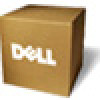Dell Broadcom NetXtreme Family of Adapters Broadcom NetXtreme II Network Adapt - Page 219
Microsoft Virtualization with Hyper-V, Single Network Adapter
 |
View all Dell Broadcom NetXtreme Family of Adapters manuals
Add to My Manuals
Save this manual to your list of manuals |
Page 219 highlights
Troubleshooting: Broadcom NetXtreme II Network Adapter User Guide Ping an IP host on the network to verify connection has been established. From the command line, type ping IP address, and then press ENTER. The ping statistics that are displayed indicate whether or not the network connection is working. Microsoft Virtualization with Hyper-V Microsoft Virtualization is a hypervisor virtualization system for Windows Server 2008 and Windows Server 2008 R2. This section is intended for those who are familiar with Hyper-V, and it addresses issues that affect the configuration of NetXtreme II network adapters and teamed network adapters when Hyper-V is used. For more information on Hyper-V, see http://www.microsoft.com/windowsserver2008/en/us/hyperv.aspx. Table 1 identifies Hyper-V supported features that are configurable for NetXtreme II network adapters. This table is not an allinclusive list of Hyper-V features. Table 1: Configurable Network Adapter Hyper-V Features Feature Supported in Windows Supported in Windows Server 2008 Server 2008 R2 IPv4 Yes Yes IPv6 Yes Yes IPv4 Large Send Offload (LSO) (parent and child partition) Yes Yes IPv4 Checksum Offload (CO) (parent and child partition) Yes Yes IPv4 TCP Offload Engine (TOE) No* Yes IPv6 LSO (parent and child partition) No* Yes IPv6 CO (parent and child partition) No* Yes IPv6 TOE iSCSI offload Jumbo frames RSS No* Yes No* Yes No* Yes No No Comments/Limitation - - - - *When bound to a virtual network, OS limitation. *When bound to a virtual network, OS limitation. *When bound to a virtual network, OS limitation. *When bound to a virtual network, OS limitation. *OS limitation. *OS limitation. OS limitation. NOTE: Ensure that Integrated Services, which is a component of Hyper-V, is installed in the guest operating system (child partition) for full functionality. NOTE: If you encounter problems while using VM Chimney, Broadcom recommends that VM Chimney be disabled due to OS stability issues. Single Network Adapter Windows Server 2008 When configuring a NetXtreme II network adapter on a Hyper-V system, be aware of the following: An adapter that is to be bound to a virtual network should not be configured for VLAN tagging through the driver's advanced properties. Instead, Hyper-V should manage VLAN tagging exclusively. Since Hyper-V does not support Jumbo Frames, it is recommended that this feature not be used or connectivity issues may occur with the child partition. The Locally Administered Address (LAA) set by Hyper-V takes precedence over the address set in the adapter's advanced properties. A TOE-enabled network adapter that is bound to a Hyper-V virtual network will report TOE as an offload capability in BACS; however, TOE will not work. This is a limitation of Hyper-V. Hyper-V does not support TOE. In an IPv6 network, a team that supports CO and/or LSO and is bound to a Hyper-V virtual network will report CO and file:///T|/htdocs/NETWORK/BroadCom/71921/NetXtremeII/en/trouble.htm[9/26/2012 3:30:19 PM]















